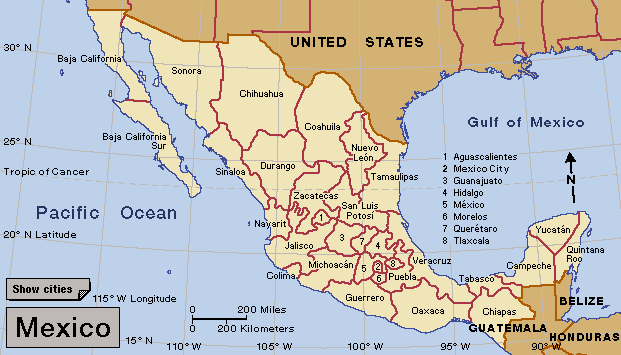Jalisco << hah LEES koh, >> is a state on the western coast of Mexico. It lies on the Pacific Ocean and has an area of 31,211 square miles (80,836 square kilometers). At the time of the 2020 census, the state had a population of 8,348,151. More than half the people lived in the metropolitan area of Guadalajara, the state capital and one of the largest cities in Mexico.

Before the Spanish arrived in Mexico in 1519, a large number of American Indians lived in what is now Jalisco. Spaniards founded Guadalajara in 1531, and the city became a major religious and economic center. It is sometimes called “the pearl of the west” because of its beautiful churches and other colonial buildings. The cultivation of grain in Jalisco’s Bajio region contributed to Guadalajara’s rapid growth. Mexico won its independence in 1821, and Jalisco became one of the original states in 1824.
Until the early 1900’s, most of Jalisco’s people lived in the countryside and worked on large farms called haciendas. In the early 1900’s, many rural peasants began migrating to cities. Today, agriculture and manufacturing are Jalisco’s chief economic activities. The state is also home to Mexico’s tequila industry.

Cowboys known as charros commonly worked on Jalisco’s haciendas and ranches until the late 1800’s. Charros remain an important part of Jalisco’s cultural heritage, and some modern charros perform in rodeos. The traditional charro costume includes silver- or gold-buttoned pants, bolero (short jacket), flowing bow tie, spurred boots, and white sombrero (wide-brimmed hat). Folk musicians known as mariachis also wear this costume. Their music, which typically incorporates guitars, trumpets, and violins, probably originated in Jalisco.
